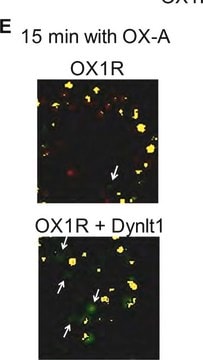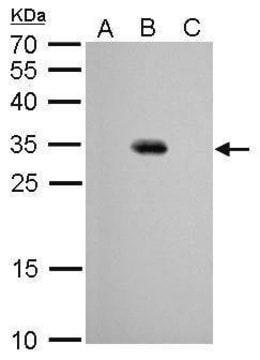G6795
Anti-Green Fluorescent Protein (GFP), N-terminal antibody, Mouse monoclonal
clone GSN24, purified from hybridoma cell culture
Synonyme(s) :
Anti-GFP
About This Item
Produits recommandés
Source biologique
mouse
Conjugué
unconjugated
Forme d'anticorps
purified immunoglobulin
Type de produit anticorps
primary antibodies
Clone
GSN24, monoclonal
Forme
buffered aqueous solution
Poids mol.
antigen 27 kDa
Concentration
~2 mg/mL
Technique(s)
western blot: 1-2 μg/mL using GFP fusion proteins expressed in extracts of transfected cells
Isotype
IgG1
Conditions d'expédition
dry ice
Température de stockage
−20°C
2-8°C
Modification post-traductionnelle de la cible
unmodified
Description générale
Spécificité
Application
Actions biochimiques/physiologiques
Forme physique
Stockage et stabilité
Clause de non-responsabilité
Not finding the right product?
Try our Outil de sélection de produits.
En option
Produit(s) apparenté(s)
Code de la classe de stockage
10 - Combustible liquids
Classe de danger pour l'eau (WGK)
WGK 3
Point d'éclair (°F)
Not applicable
Point d'éclair (°C)
Not applicable
Certificats d'analyse (COA)
Recherchez un Certificats d'analyse (COA) en saisissant le numéro de lot du produit. Les numéros de lot figurent sur l'étiquette du produit après les mots "Lot" ou "Batch".
Déjà en possession de ce produit ?
Retrouvez la documentation relative aux produits que vous avez récemment achetés dans la Bibliothèque de documents.
Les clients ont également consulté
Notre équipe de scientifiques dispose d'une expérience dans tous les secteurs de la recherche, notamment en sciences de la vie, science des matériaux, synthèse chimique, chromatographie, analyse et dans de nombreux autres domaines..
Contacter notre Service technique













